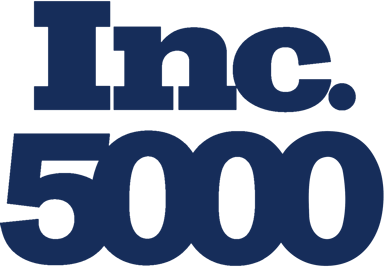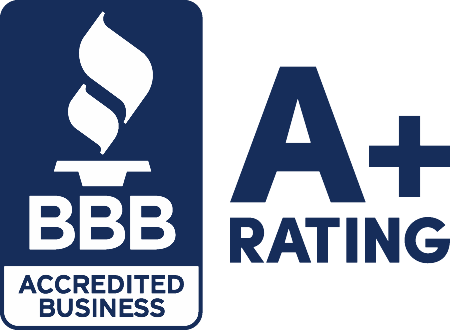What are SBA Microloans?
Microloans are a subset of the SBA loan program. The US Small Business Administration (SBA) authorizes and administers the various loan packages available under SBA loans.
Most SBA loans are for larger borrowing amounts and are typically available to established businesses. The SBA Microloan, however, is designed specifically for startups and newer small businesses. The maximum loan amount for the SBA microloan is $50,000, with an average of $13,000.
While most new small business owners can apply for an SBA microloan, the program is specifically beneficial to minority entrepreneurs. One of the program’s goals is funding new businesses in underserved and low-income communities.
The SBA microloan program is open to all for-profit small businesses and specific nonprofit child care centers. SBA microloans can be used for working capital and purchasing inventory or equipment.
The SBA also provides assistance and educational resources to small businesses.
HHow does the SBA Microloan Program work?
-
Maximum funding amount: $50,000 (the average microloan is $13k).
-
Interest rates: Varies, typically between 8% and 13%
-
Repayment terms: Maximum of 72 months.
-
Funding speed: 1-3 months.
Microloans are the only SBA loan program where the SBA provides the funding. In most SBA loans, the funding is provided by a third-party lender.
The SBA provides funding to approved nonprofit community-based lenders, acting as intermediary lenders for microloan applicants. The specially designated intermediary lenders possess experience in lending and provide managerial and technical assistance to eligible borrowers.
How Entrepreneurs Can Use SBA Microloan Funds
SBA microloans are pretty flexible and tailored to help launch or grow a business. Loan funds can be used for:
-
Working capital — keep daily operations flowing smoothly with cash for rent, utilities, payroll, etc.
-
Inventory and supplies — stock up on goods, raw materials, or essential office/classroom supplies.
-
Furniture & fixtures — finance counters, shelving, desks, displays, seating—ideal for stores, salons, childcare centers.
-
Equipment & machinery — purchase tools, kitchen equipment, computers, manufacturing machines, delivery vehicles (excluding real estate).
What You Can’t Use the Funds For:
-
No real estate purchases — you can’t purchase real estate or land with a microloan.
-
No debt refinancing — funds can’t be used to refinance or consolidate existing debt.
Who qualifies for an SBA Microloan?
The qualifications for the SBA microloan depend on the specific intermediary lender. Each lender sets their own requirements. However, since the loans are intended for new businesses and underrepresented entrepreneurs, the qualifications are typically lower than those of other SBA loans. That means the minimum credit score requirement may be lower than it is for other SBA loans.
Loan Collateral
Generally, SBA microloan borrowers are required to provide collateral for the loan. In addition, you will need to sign a personal guarantee, which is a promise to repay the loan. If you default on your loan, the lender can seize your personal assets as repayment.
How do I get an SBA Microloan?
SBA microloans require working with an approved intermediary lender. You can access the SBA’s list of lenders to find one in your area. Approval times for SBA microloans generally range from one to three months. Many microloan lenders are community-based organizations. Traditional banks typically don’t offer microloan programs.
Typically, you will contact a lender in your district to complete the application process. The SBA provides the funding for the loan through community lenders.
Documentation Requirements
Before applying, please prepare your loan documents. While the exact documentation requirements vary between lenders, you should prepare the following documents:
-
Personal tax returns for the previous two years.
-
Recent pay stubs or other proof of income.
-
Documentation on available collateral, including any relevant titles or deeds.
-
Your business plan & cash flow projections.
-
Any contracts, invoices, quotes, or purchase agreements.
If your business is already established and you’re applying for funds to grow the business, you also need to prepare some financial documents. You should prepare the following:
-
Business tax returns.
-
Your balance sheet & income statement.
-
Any deeds, leases, or contracts in the business’s name.
-
List of current business assets, including accounts receivable reports if available.
Application Process
Applying for an SBA microloan involves several essential steps, usually carried out through a nonprofit intermediary lender in your area. Here’s a step-by-step guide to walk you through it:
-
Find an Intermediary Lender: Visit the SBA’s lender search tool to locate approved microloan providers near you. These community-based lenders also offer technical assistance to support your application.
-
Consult with the Lender: Reach out to your selected lender to discuss your business needs and confirm eligibility. Many lenders focus on startups, underserved communities, or specific industries.
-
Prepare Your Documentation: Gather the necessary personal and business financial documents, including:
-
Tax returns (personal and business, if applicable)
-
Proof of income
-
Business plan with cash flow projections
-
Licenses, leases, and collateral documentation
-
-
Submit Your Application: Complete the lender’s application form, either online or in person. Be thorough and accurate, as this can significantly impact your approval timeline.
-
Undergo Review & Approval: The lender will review your documents, assess your business plan, and possibly request an interview. Approval typically takes 1 to 3 months, depending on the lender and the complexity of your application.
-
Sign Final Documents: Once approved, you’ll review and sign the loan agreement, including the terms for repayment, interest rate, and use of funds.
Post-Funding
After your SBA microloan is funded, the focus shifts to execution and repayment. Using and repaying the funds successfully is crucial to the financial protection of your business.
Here’s what to expect:
Launch or Grow Your Business: Utilize the funds following your approved business plan. Many borrowers use the capital to:
-
Launch new operations
-
Obtain a business license
-
Purchase equipment or inventory
-
Hire staff
-
Cover short-term operating expenses
Since SBA microloans can’t be used for real estate or debt refinancing, make sure all spending aligns with your lender-approved budget.
Utilize Lender Support: Many SBA intermediary lenders offer ongoing mentorship, technical training, and support post-funding. Take advantage of these free services to stay on track with your business growth goals.
Repayment Process: Repayment terms for SBA microloans typically range from six to 12 years, with interest rates ranging from 8% to 13%. Most lenders require monthly payments, and some offer grace periods before repayment begins. Be sure to:
-
Set up automated payments to avoid missing deadlines
-
Monitor your cash flow closely
-
Communicate with your lender if financial difficulties arise
Repaying your SBA microloan on time can help build your credit and position your business for future funding opportunities, including larger SBA loans or private financing.
What are the advantages of SBA Microloans?
The primary benefit of the SBA microloan program is providing funding to entrepreneurs who would otherwise be unable to obtain financing. Although the exact qualifications vary depending on the lender, most requirements are generally lower than those for traditional business loans.
For example, since the microloan is intended for new businesses, most don’t require a certain amount of time in business or annual revenue. While the better your credit score, the more likely you’ll get approved, most personal credit score requirements are lower than those of other SBA loans. Some lenders don’t look at your credit report at all.
The SBA microloan program also helps fund minority entrepreneurs in underserved areas. In 2021, 46% of SBA microloan recipients were women.
What are the disadvantages of SBA Microloans?
SBA microloans are intended for startups or recently established businesses, which precludes many companies with two or more years in operation. The loan amount cap is $50,000.
Qualifying for an SBA microloan depends entirely on the requirements of the intermediary lenders in your area. You must work with one of these nonprofit organizations to apply for and receive an SBA microloan.
Pros & Cons
Pros:
-
Available to new business owners with lower credit scores or no credit history.
-
Funds are meant specifically for startups and new businesses.
-
Provides funding to businesses in underserved communities.
-
Helps promote entrepreneurship among minorities.
-
Many intermediary lenders offer additional services, such as management training and business development courses.
Cons:
-
Only available to newer & startup businesses.
-
Low maximum borrowing amount is $50,000.
-
Requires working with an intermediary lender.
-
Qualifications vary significantly depending on the lender.
Frequently Asked Questions
Here are the most common questions about SBA microloans.
Can I get an SBA Microloan with bad credit?
Depending on the lender, getting a microloan with poor credit might be possible. Some SBA microlenders don’t require a credit score. Check with the other lenders in your area. If you don’t qualify for any SBA loan programs because of poor credit, there are bad credit business loans that alternative online business lenders may approve for you.
Are there other SBA Loan Options?
Yes, more established businesses should consider one of the following SBA loan options:
-
SBA Export Express Loans
-
SBA Small Loans
-
SBA 504 Loans (aka SBA CDC/504 Loans)
-
SBA Export Loans
-
SBA Export Express Loans
What are other Small Business Loans available?
Not every business qualifies for an SBA loan. Fortunately, there are numerous other funding options besides SBA and microloan lenders.
Other Government-Backed Loans
There are some microloan programs outside of the SBA. For example, the USDA provides microloans, called FSA loans, named after the Farm Service Agency that developed them.
Options for New Business Owners
Startups and new business owners typically struggle to qualify for business financing. However, business credit cards may be more accessible than business loans. In addition, some entrepreneurs fund startup costs with personal loans. However, it’s generally advised to avoid mixing personal and business finances. Organizations like the Accion Opportunity Fund can also assist with small business funding and development.
Small Business Loans
Established business owners have various small business loan options. Each financial product listed below serves a different purpose. Alternative lenders have less stringent eligibility requirements and can provide financing quickly compared to traditional lenders.
Consider one of the following loans if you can’t qualify for a loan through the SBA:
SBA Microloan – Final Thoughts
SBA microloans are an excellent option for younger businesses and startups seeking funding to grow. While the maximum loan amounts are low, it’s much easier to qualify for this type of loan.
Contact us if you need more information on SBA microloans or would like to explore other small business loan options.
















